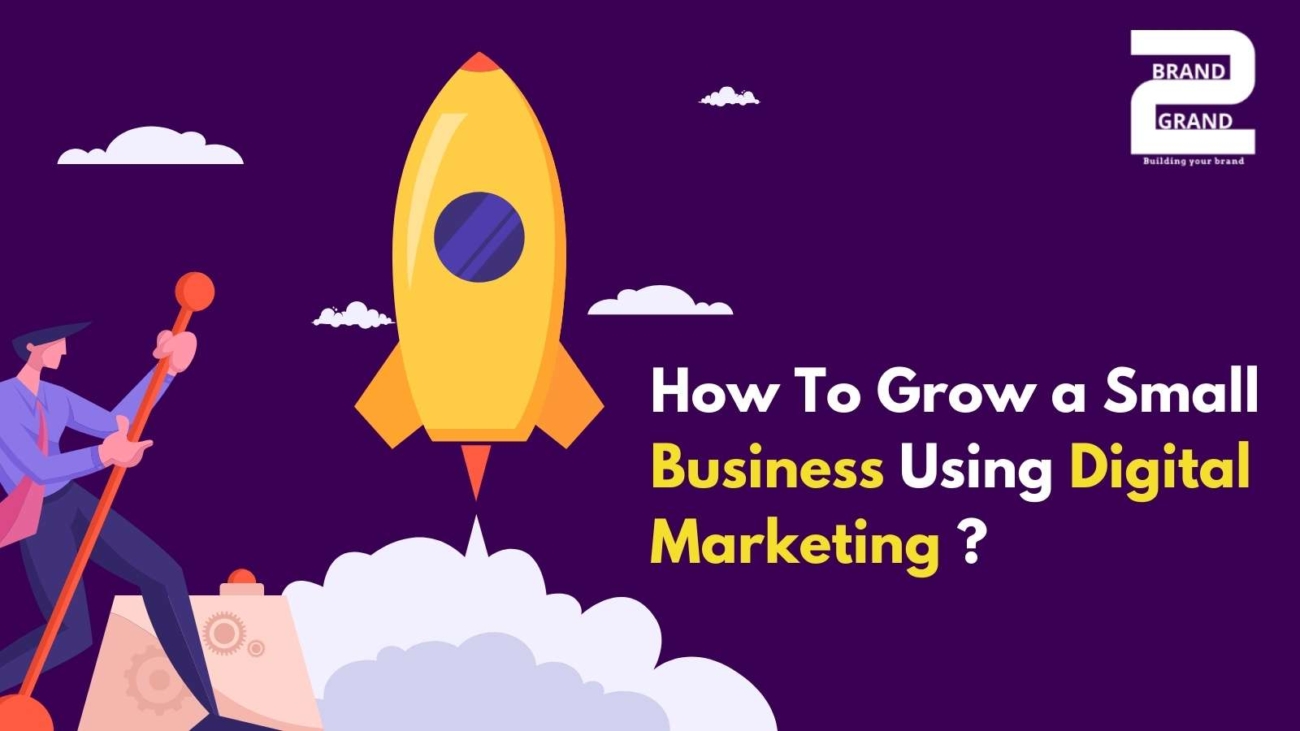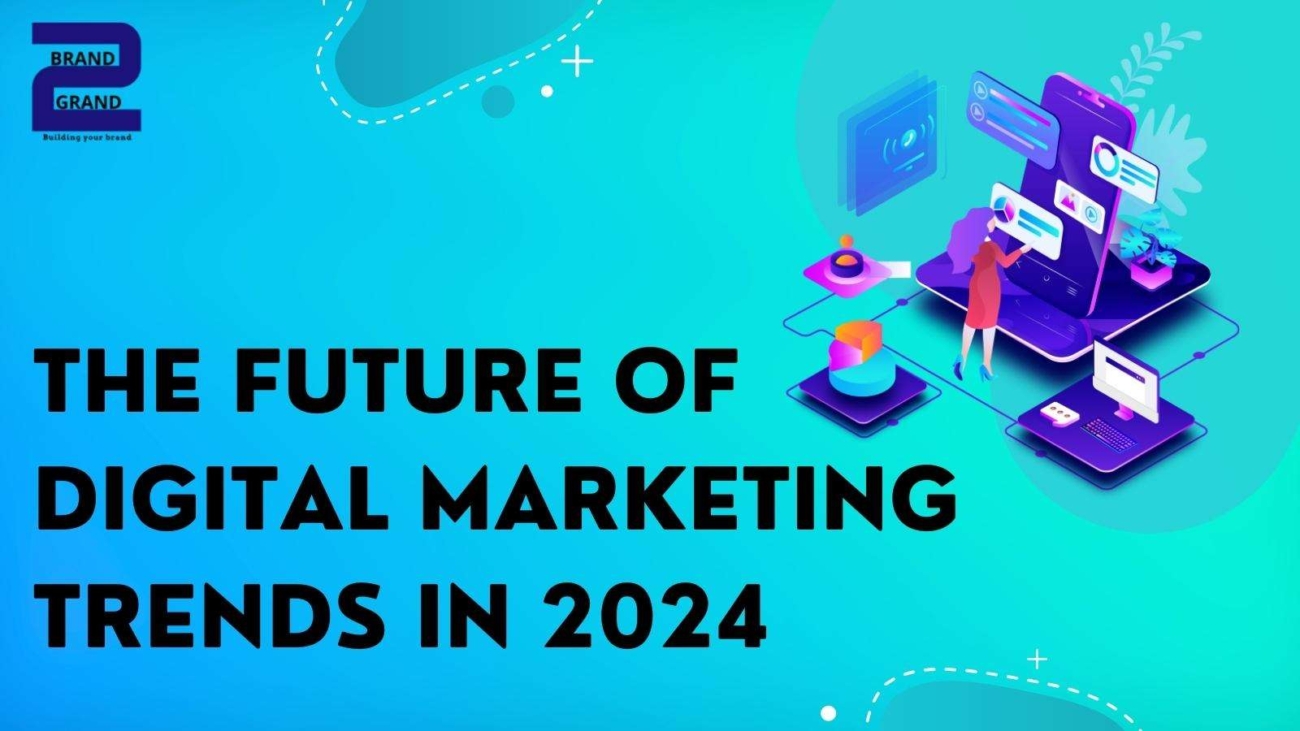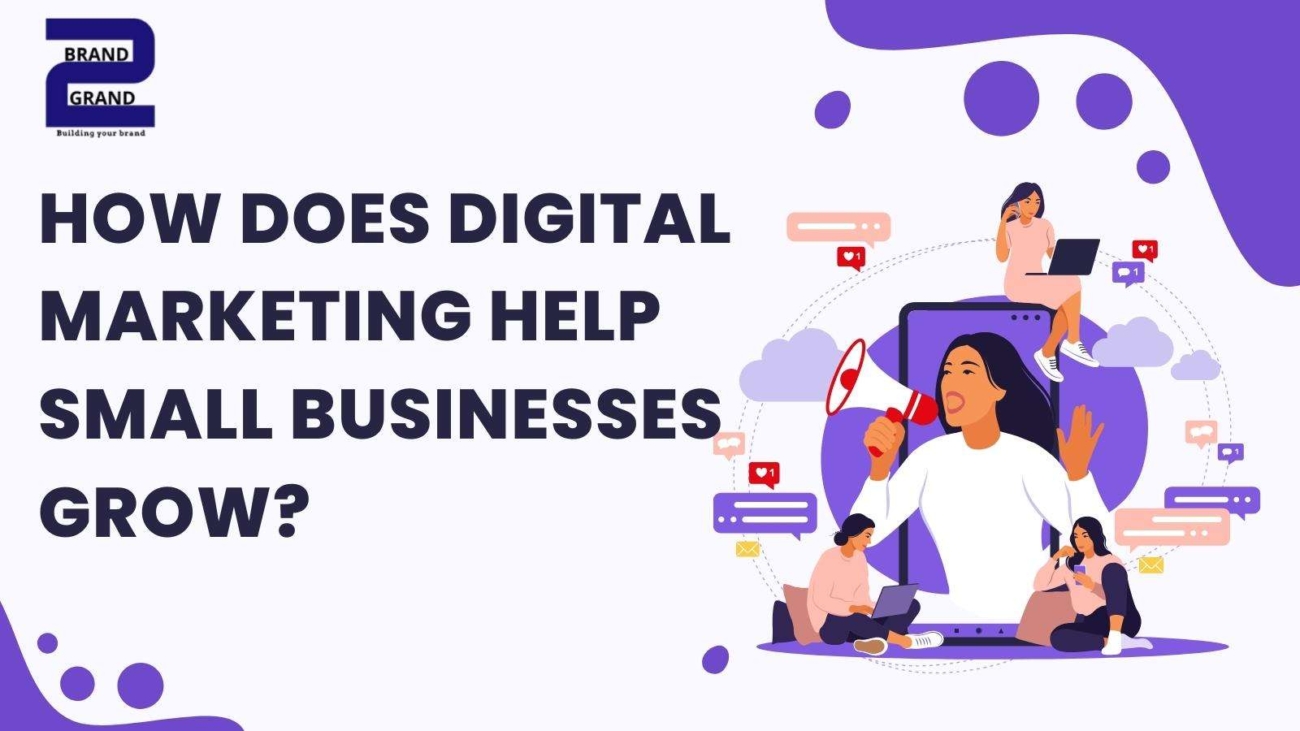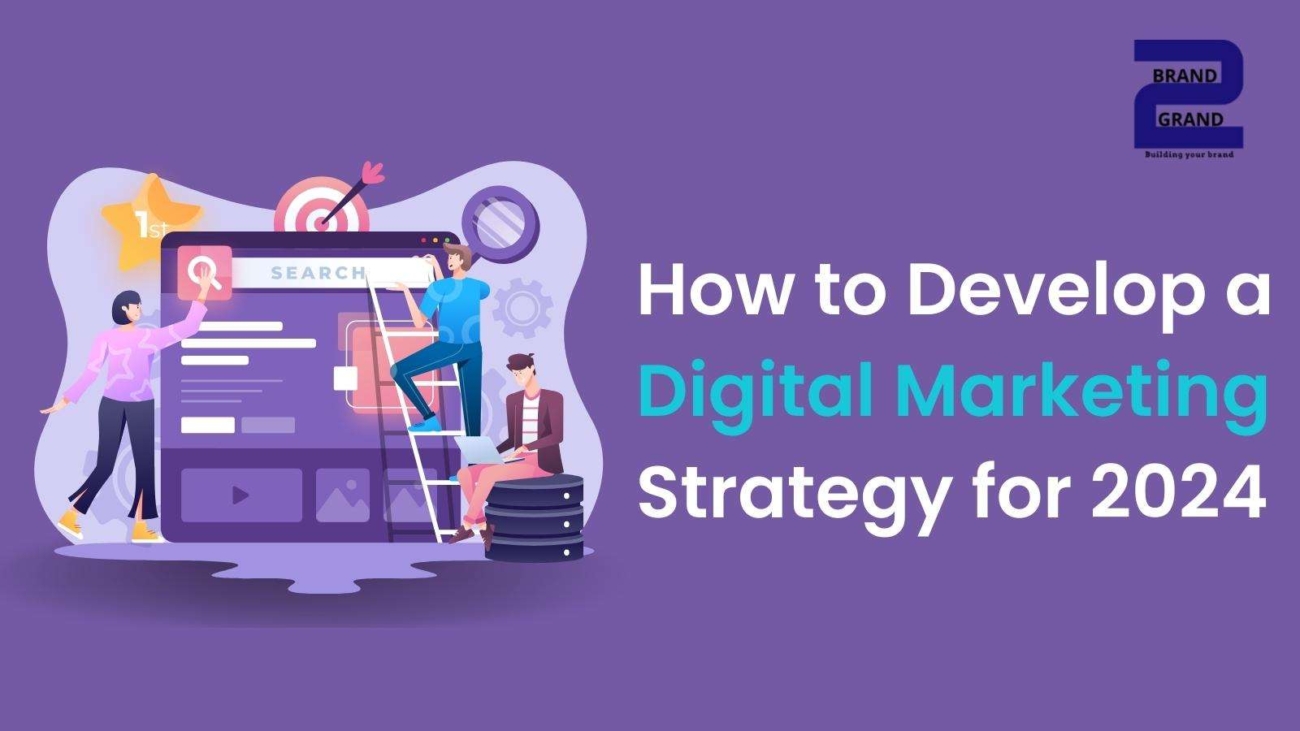While I don’t have real-time data as my training only includes information up until January 2022, I can provide you with some general digital marketing trends and statistics that were relevant at that time. Keep in mind that for the most accurate and up-to-date information, you should refer to the latest industry reports and reputable sources in 2024. Here are some trends and statistics that were pertinent to digital marketing as of 2022:
1. Video Marketing Dominance:-
Video content was on the rise, with platforms like YouTube, TikTok, and Instagram Reels gaining popularity. Businesses were increasingly leveraging video content in their marketing strategies.
2. Rise of Influencer Marketing:-
Influencer marketing continued to be a powerful strategy, with businesses collaborating with influencers to reach their target audiences authentically.
3. Mobile-First Approach:-
The majority of online users were accessing content via mobile devices. As a result, a mobile-first approach in website design and marketing strategies became crucial.
4. Voice Search Optimization:-
With the increasing use of voice-activated devices like smart speakers and virtual assistants, optimizing content for voice search became important for digital marketers.
5. AI and Chatbots:-
Artificial intelligence (AI) and chatbots were being increasingly integrated into digital marketing strategies to enhance customer interactions, personalize content, and streamline communication.
6. Personalization and Customer Experience:-
Personalized marketing experiences were gaining traction, with businesses using data to tailor content and offers to individual preferences.
7. Ephemeral Content:-
The popularity of ephemeral content on platforms like Instagram Stories and Snapchat showcased the importance of creating temporary, engaging content for audience interaction.
8. Interactive Content:-
Interactive content, such as polls, quizzes, and interactive videos, gained popularity for boosting user engagement and providing a more immersive experience.
9. SEO and SERP Features:-
Google’s search engine results pages (SERPs) continued to evolve, with features like featured snippets, knowledge panels, and video carousels impacting SEO strategies.
10. Social Commerce Growth:-
Social media platforms were increasingly becoming e-commerce hubs, with features like shoppable posts and in-app purchasing gaining prominence.
11. Data Privacy Concerns:-
With growing concerns about data privacy, digital marketers were adapting to new regulations and consumer expectations, emphasizing transparency and ethical data practices.
12. Remote Work Impact:-
The shift to remote work influenced digital marketing strategies, with an increased focus on digital channels for communication, collaboration, and customer engagement.
Keep in mind that the digital marketing landscape is dynamic, and trends can change rapidly. Stay updated with the latest industry reports, attend webinars and conferences, and follow reputable marketing blogs to stay informed about the most recent statistics and trends in 2024.
Why Choose a Digital Marketing Career in 2024?
Choosing a digital marketing career in 2024 can be a strategic decision for several reasons, given the ongoing trends and developments in the industry. Here are some compelling reasons to consider:
1. High Demand for Digital Marketing Professionals:-
Digital marketing continues to be a critical component of business strategies worldwide. As more businesses recognize the importance of an online presence, the demand for skilled digital marketers is likely to remain high.
2. Versatility and Constant Evolution:-
Digital marketing is a dynamic field that constantly evolves with technological advancements and changes in consumer behavior. This constant evolution provides opportunities for professionals to learn and adapt, ensuring a diverse and interesting career.
3. Remote Work Opportunities:-
The digital nature of the field allows for remote work opportunities. With the increasing acceptance of remote work, a digital marketing career can provide flexibility and work-life balance.
4. Diverse Career Paths:-
Digital marketing encompasses various specialties, including social media marketing, content marketing, search engine optimization (SEO), email marketing, and more. This diversity allows individuals to specialize in areas that align with their interests and strengths.
5. Data-Driven Decision-Making:-
The availability of data analytics tools allows digital marketers to make informed decisions based on real-time data. This data-driven approach is highly valued in the industry and contributes to the effectiveness of marketing campaigns.
6. Continuous Learning Opportunities:-
The digital marketing landscape is ever-changing, requiring professionals to stay updated with the latest trends and technologies. This constant learning environment can be intellectually stimulating and help individuals stay competitive in the job market.
7. Global Reach and Targeting:-
Digital marketing enables businesses to reach a global audience. Professionals in this field can work on campaigns that target specific demographics and regions, allowing for a broad impact and global exposure.
8. Entrepreneurial Opportunities:-
Digital marketing skills are valuable for entrepreneurs looking to promote their own businesses. Whether you are working for a company or running your own venture, a strong understanding of digital marketing is crucial for success.
9. Innovative Technologies:-
The integration of innovative technologies such as artificial intelligence (AI), augmented reality (AR), and virtual reality (VR) in digital marketing opens up new possibilities and challenges, making the field exciting for those who enjoy cutting-edge technologies.
10. Competitive Salary Potential:-
As businesses invest more in digital marketing, the demand for skilled professionals often results in competitive salaries. This can make a digital marketing career financially rewarding.
In summary, a digital marketing career in 2024 offers a dynamic and rewarding path with numerous opportunities for growth, learning, and impact. It’s a field that aligns well with the digital age and can be a fulfilling choice for those who enjoy creativity, analytics, and staying at the forefront of technological advancements.
How to Grow Your Email List for Business The Easy Way
Growing your email list is a valuable strategy for business growth, as it allows you to build a direct and engaged audience. Here are some easy and effective ways to grow your email list:
1. Create Compelling Content:-
– Offer high-quality, valuable content that your target audience finds useful. This can be in the form of blog posts, ebooks, whitepapers, infographics, or other resources.
2. Use Opt-In Forms on Your Website:-
– Place prominent and visually appealing opt-in forms on your website, including on your homepage, blog posts, and landing pages. Make it easy for visitors to subscribe.
3. Offer Lead Magnets:-
– Provide incentives for people to subscribe by offering lead magnets such as ebooks, guides, checklists, templates, or exclusive content. Make sure your lead magnets are relevant to your audience’s interests.
4. Implement Exit-Intent Popups:-
– Use exit-intent popups to capture visitors who are about to leave your site. Offer a special discount, content upgrade, or other incentives to encourage them to subscribe.
5. Run Contests and Giveaways:-
– Host contests or giveaways that require participants to subscribe to your email list. This can help attract new subscribers and create buzz around your brand.
6. Utilize Social Media:-
– Promote your email signup across your social media platforms. Consider using paid social media advertising to reach a broader audience.
7. Optimize Landing Pages:-
– Create dedicated landing pages for specific campaigns or lead magnets. Ensure that these pages have a clear and compelling call-to-action (CTA) to encourage sign-ups.
8. Segment Your Email List:-
– Implement segmentation to send targeted and personalized content to different segments of your audience. This can increase engagement and encourage more people to subscribe.
9. Host Webinars or Online Events:-
– Host webinars or online events and require registration. This not only provides value to your audience but also helps grow your email list with engaged participants.
10. Collaborate with Others:-
– Partner with influencers, other businesses, or industry experts for joint promotions or co-hosted events. This can expose your brand to new audiences and encourage sign-ups.
11. Use Referral Programs:-
– Implement referral programs where current subscribers can refer others to join your email list. Incentivize both the referrer and the new subscriber for maximum impact.
12. Optimize Email Sign-Up Forms:-
– Keep your sign-up forms simple, with only essential fields. A lengthy form can discourage people from subscribing. Test different form placements and designs to see what works best.
13. Offer Exclusive Discounts:-
– Provide exclusive discounts or early access to products/services for subscribers. This can be a powerful incentive for potential customers to join your email list.
14. Collect Emails Offline:-
– If you have a physical store or attend events, collect email addresses offline. Use tablets or sign-up sheets to capture contacts and later add them to your email list.
15. Encourage Forwarding and Sharing:-
– Include social sharing buttons in your emails and encourage subscribers to forward your emails to friends or colleagues who might be interested.
Remember to comply with data protection regulations and obtain explicit consent from subscribers before sending marketing emails. Consistently providing value and respecting your subscribers’ preferences will help you maintain a healthy and engaged email list over time.
9 Best WordPress Audio Player Plugins for Your Website
As of my last knowledge update in January 2022, there are several WordPress audio player plugins available that can enhance the functionality of your website when it comes to managing and displaying audio content. Here are nine popular WordPress audio player plugins:
1. AudioIgniter:-
– Features:
– Responsive design.
– Multiple audio formats support.
– Playlist creation with a user-friendly interface.
– Easy customization of colors and styles.
– Integration with the default WordPress media manager.
2. Compact WP Audio Player:-
– Features:
– Compact and lightweight audio player.
– Supports MP3 and OGG file formats.
– Customizable colors and sizes.
– Seamless integration into your site.
3. Seriously Simple Podcasting:-
– Features:
– Designed for podcasting with built-in media player.
– Supports podcast series, episodes, and seasons.
– Embeddable podcast players.
– Integration with podcast directories.
4. PowerPress Podcasting Plugin by Blubrry:
– Features:
– Comprehensive podcasting plugin.
– Simple and advanced modes for users of all skill levels.
– SEO-friendly with iTunes and Google Play support.
– Integrated HTML5 media player.
5. MP3 Music Player by Sonaar:-
– Features:
– A modern and stylish audio player.
– Seamless integration with your theme.
– Supports MP3 and OGG file formats.
– Mobile-responsive design.
6. WonderPlugin Audio Player:-
– Features:
– Supports various audio file formats.
– Customizable skins and layouts.
– Responsive and touch-friendly design.
– Automatically creates a playlist from a specified folder.
7. Audio Album:-
– Features:
– Allows you to create audio albums with multiple tracks.
– Customizable layouts and styles.
– Supports MP3, OGG, and WAV file formats.
– Mobile-friendly and responsive.
8. Cue:-
– Features:
– Minimalistic and stylish design.
– Supports MP3 and OGG file formats.
– Keyboard shortcuts for easy navigation.
– Responsive and touch-friendly.
9. CP Media Player – Audio Player and Video Player:-
– Features:
– Supports audio and video playback.
– HTML5 and Flash fallback for compatibility.
– Customizable design and colors.
– Playlist creation and management.
Before choosing a plugin, make sure it’s compatible with your WordPress version and meets your specific requirements. Additionally, always check for recent updates and user reviews to ensure the plugin is actively maintained and reliable. As the WordPress ecosystem evolves, new plugins may become available, so consider exploring the WordPress plugin repository for the latest options.
How to grow a small business using digital marketing?
Growing a small business using digital marketing involves leveraging online channels and strategies to reach a broader audience, increase brand awareness, and drive customer engagement. Here’s a comprehensive guide on how to grow a small business using digital marketing:
1. Build a Strong Online Presence:-
– Website Optimization: Ensure your website is user-friendly, mobile-responsive, and optimized for search engines (SEO).
– Google My Business: Claim and optimize your Google My Business listing for local visibility.
2. Define Your Target Audience:-
– Identify your ideal customers and create buyer personas to tailor your marketing efforts accordingly.
3. Content Marketing:-
– Create valuable and relevant content to showcase your expertise and attract your target audience.
– Blogging, videos, infographics, and ebooks can all contribute to a robust content marketing strategy.
4. Social Media Marketing:-
– Choose social media platforms where your audience is active.
– Develop a content calendar and share a mix of promotional and engaging content.
– Utilize paid advertising on platforms like Facebook and Instagram.
5. Email Marketing:-
– Build and segment your email list for targeted communication.
– Implement personalized and automated email campaigns.
– Offer exclusive promotions and incentives to subscribers.
6. Search Engine Optimization (SEO):-
– Optimize your website for relevant keywords to improve search engine rankings.
– Create quality backlinks and regularly update your content.
7. Paid Advertising:-
– Use Google Ads for targeted search engine advertising.
– Consider social media advertising on platforms like Facebook, Instagram, and LinkedIn.
8. Leverage Local SEO:-
– Ensure accurate business information across online directories.
– Encourage customer reviews and respond promptly to feedback.
9. Mobile Optimization:-
– Optimize your website and content for mobile users.
– Consider mobile advertising options for reaching a broader audience.
10. Influencer Marketing:-
– Collaborate with local influencers or micro-influencers in your industry.
– Leverage influencer partnerships for product/service promotions.
11. Analytics and Data Tracking:-
– Use analytics tools to track website traffic, user behavior, and marketing campaign performance.
– Analyze data to make informed decisions and optimize your strategies.
12. Customer Engagement:-
– Actively engage with your audience on social media and respond to comments and messages.
– Encourage user-generated content and customer testimonials.
13. E-commerce Integration (if applicable):-
– If your business involves selling products, consider setting up an online store.
– Optimize the checkout process and offer secure payment options.
14. Partnerships and Collaborations:-
– Explore partnerships with other local businesses for cross-promotions.
– Collaborate with influencers or industry experts for joint initiatives.
15. Customer Retention Programs:-
– Implement loyalty programs and offer exclusive deals to repeat customers.
– Regularly communicate with existing customers through newsletters and updates.
16. Stay Updated and Adapt:-
– Stay informed about industry trends and emerging digital marketing strategies.
– Continuously adapt your approach based on performance metrics and changing market dynamics.
Remember that consistency is key in digital marketing. Regularly monitor your efforts, analyze data, and make adjustments to optimize your strategy over time. Digital marketing is an ongoing process that requires adaptation and refinement based on your business goals and the evolving digital landscape.
The Future of Digital Marketing Trends in 2024
As we look ahead to 2024, the digital marketing landscape is expected to continue evolving rapidly. Here are some key trends and developments that are likely to shape the future of digital marketing:
1. AI and Machine Learning Integration:- Artificial intelligence and machine learning will play an increasingly central role in digital marketing. These technologies will be used to personalize content, automate marketing processes, optimize advertising campaigns, and analyze data for better decision-making.
2. Voice and Visual Search:- Voice and visual search are expected to become more prevalent. Marketers will need to optimize their content for voice and image-based queries, which will change the way SEO and content strategies are approached.
3. Privacy and Data Regulation:- Data privacy concerns and regulatory changes will continue to impact digital marketing. Stricter data protection laws and increased consumer demand for privacy will require marketers to be more transparent in their data collection and usage practices.
4. Content Personalization:- Personalization will become more sophisticated, with brands leveraging data to deliver highly targeted content and product recommendations. Dynamic content and AI-driven personalization will create more engaging and relevant user experiences.
5. Video and Live Streaming:- Video content will maintain its dominance, with live streaming gaining further popularity. Brands will use video to tell stories, provide behind-the-scenes glimpses, and engage with their audience in real time.
6. Ephemeral Content:- The popularity of short-lived, ephemeral content on platforms like Instagram Stories and Snapchat is expected to continue. Marketers will need to harness the FOMO (fear of missing out) effect and create content that encourages immediate engagement.
7. Augmented and Virtual Reality (AR/VR):- AR and VR technologies will see increased adoption in marketing. Brands will use AR for virtual try-ons, product visualization, and interactive advertising campaigns, while VR may be used for immersive brand experiences.
8. Influencer Marketing Evolution:- Influencer marketing will continue to evolve, with a focus on micro-influencers, niche experts, and long-term partnerships. Authenticity and transparency will be crucial for successful influencer collaborations.
9. Sustainability and Social Responsibility:- Consumers will expect brands to be more socially and environmentally responsible. Brands that incorporate sustainability and ethical practices into their marketing efforts will likely gain a competitive edge.
10. 5G Impact:- The rollout of 5G technology will create opportunities for more interactive and data-intensive marketing experiences. Faster internet speeds will enable higher-quality video streaming, augmented reality applications, and more immersive digital experiences.
11. NFTs and Blockchain in Marketing:- Non-fungible tokens (NFTs) and blockchain technology may find applications in digital marketing, including digital collectibles, ownership certificates, and transparent supply chains.
12. Search Engine Changes:- Search engines will continue to evolve. As search engine algorithms become more sophisticated, marketers will need to focus on providing high-quality, relevant content and optimizing for new search behaviors and features.
Digital marketing in 2024 will require adaptability and a focus on creating meaningful and relevant experiences for the target audience while navigating an ever-changing technological and regulatory landscape. Staying updated with industry trends and emerging technologies will be essential for marketers to remain competitive in the digital space.
How to grow business in digital marketing 2024
Growing a business through digital marketing in 2024 will require a strategic and adaptable approach, given the evolving landscape. Here are key strategies to consider:
1. Understand Your Audience:-
– Conduct thorough audience research to understand their needs, preferences, and pain points.
– Create detailed buyer personas to tailor your digital marketing efforts effectively.
2. Quality Content Creation:-
– Invest in high-quality, relevant, and engaging content across various formats (text, video, audio, visuals).
– Consistently provide value to your audience to build trust and authority.
3. SEO Optimization:-
– Stay up-to-date with SEO best practices and algorithm changes.
– Focus on optimizing for voice and visual search.
– Use keyword research and on-page SEO to improve your website’s visibility in search results.
4. Personalization:-
– Leverage data and AI to deliver personalized experiences to your audience.
– Use dynamic content and tailored recommendations to engage users.
5. Mobile Optimization:-
– Ensure your website and content are mobile-friendly and load quickly.
– Optimize for mobile search, as mobile users are a significant portion of your audience.
6. Social Media Strategy:-
– Be present on the social media platforms where your audience is most active.
– Create engaging content, interact with your followers, and use paid advertising to expand your reach.
7. Email Marketing:-
– Develop a robust email marketing strategy to nurture leads and maintain customer relationships.
– Personalize email content and use automation for efficiency.
8. Video Marketing:-
– Invest in video content and live streaming.
– Use video to tell stories, demonstrate products, and connect with your audience.
9. Influencer Partnerships:-
– Collaborate with micro-influencers or industry experts to reach a wider audience.
– Ensure influencers align with your brand values and target demographics.
10. Data Analytics:-
– Use analytics tools to track the performance of your digital marketing efforts.
– Make data-driven decisions to optimize your strategies.
11. E-commerce Expansion:-
– If applicable, consider expanding your e-commerce capabilities to facilitate online sales.
– Implement an efficient and user-friendly online shopping experience.
12. Local SEO:-
– For businesses with physical locations, focus on local SEO strategies to attract nearby customers.
– Encourage customer reviews and ensure your Google My Business profile is up-to-date.
13. Sustainability and Social Responsibility:-
– Embrace sustainable and socially responsible practices and communicate them in your marketing efforts.
– Highlight your commitment to ethical and environmentally-friendly initiatives.
14. Adapt to Technological Changes:-
– Stay updated with emerging technologies like AR, VR, and blockchain that may impact your industry.
– Be ready to incorporate relevant technology into your marketing strategies.
15. Compliance and Ethics:-
– Stay compliant with data protection and privacy regulations.
– Be transparent in your data collection and usage practices.
16. Community Building:-
– Foster an online community around your brand.
– Engage with your audience on social media and encourage user-generated content.
17. Test and Experiment:-
– Continuously test and experiment with different digital marketing tactics.
– Be open to trying new channels and approaches as the digital landscape evolves.
18. Invest in Training and Talent:-
– Ensure your team has the necessary skills and knowledge to implement effective digital marketing strategies.
– Consider investing in ongoing training and hiring experts if needed.
Digital marketing in 2024 will be characterized by adaptability and a strong focus on providing value and personalized experiences to the audience. Keep an eye on industry trends, stay updated with best practices, and be ready to adjust your strategies as needed to achieve business growth in the digital space.
How does digital marketing help small businesses grow
Digital marketing can be a powerful tool for small businesses looking to grow and succeed in today’s digital age. Here are several ways in which digital marketing can benefit small businesses:
1. Cost-Effective:- Digital marketing is often more cost-effective than traditional marketing methods. Small businesses with limited budgets can reach a broader audience through online channels like social media, email marketing, and search engine optimization (SEO) without the high costs associated with print or TV advertising.
2. Targeted Audience:- Digital marketing allows businesses to target specific demographics and interests, ensuring that their message reaches the most relevant audience. This targeted approach increases the likelihood of conversion and customer engagement.
3. Online Visibility:- Having a strong online presence is crucial in today’s digital landscape. Digital marketing helps businesses establish and maintain their online visibility, making it easier for potential customers to find them through search engines, social media, and other online platforms.
4. Measurable Results:- Unlike traditional marketing, digital marketing provides detailed analytics and performance metrics. Small businesses can track the effectiveness of their campaigns in real-time, allowing them to make data-driven decisions and optimize their strategies.
5. Increased Customer Engagement:- Social media and email marketing enable direct interaction with customers. Small businesses can build relationships, gather feedback, and provide excellent customer service through these channels.
6. Global Reach:- Small businesses can reach a global audience, breaking geographical boundaries and expanding their customer base. This is especially beneficial for businesses looking to grow beyond their local market.
7. Content Marketing:- Creating valuable and relevant content is an essential part of digital marketing. Small businesses can use content to position themselves as industry experts, attract and engage customers, and build trust with their audience.
8. Competitive Advantage:- Digital marketing levels the playing field for small businesses, allowing them to compete with larger corporations. A well-executed digital strategy can help small businesses differentiate themselves in the market.
9. Flexibility:- Digital marketing strategies can be adapted and changed quickly to respond to market trends or adjust to shifting business needs. This agility is essential for small businesses looking to stay competitive.
10. Online Sales:- E-commerce and online marketplaces provide opportunities for small businesses to sell their products and services directly to customers, expanding their revenue streams.
11. Improved ROI:- With the ability to track and analyze campaign performance, small businesses can make data-driven decisions to maximize their return on investment (ROI).
To make the most of digital marketing, small businesses should carefully plan their strategies, understand their target audience, and stay updated with the latest digital marketing trends and technologies. Whether it’s through social media marketing, SEO, email campaigns, or paid advertising, a well-executed digital marketing plan can significantly contribute to a small business’s growth and success.
How to Develop a Digital Marketing Strategy for 2024
Developing a digital marketing strategy for 2024 requires a forward-thinking approach that incorporates the latest trends and technologies. Here’s a step-by-step guide to help you create an effective digital marketing strategy for the coming year:
1. Set Clear Objectives:-
– Define specific, measurable, achievable, relevant, and time-bound (SMART) goals for your digital marketing efforts. These goals could include increasing website traffic, growing social media followers, boosting sales, or improving brand awareness.
2. Audience Research:-
– Understand your target audience’s demographics, behaviors, interests, and pain points. Create detailed buyer personas to guide your marketing efforts effectively.
3. Competitive Analysis:-
– Analyze your competitors’ digital marketing strategies. Identify their strengths, weaknesses, and areas where you can differentiate your brand.
4. SWOT Analysis:-
– Conduct a SWOT (Strengths, Weaknesses, Opportunities, Threats) analysis for your business to identify internal and external factors that can impact your digital marketing strategy.
5. Budget Allocation:-
– Determine your digital marketing budget. Allocate funds to different channels and tactics, ensuring a balance that aligns with your objectives.
6. Channel Selection:-
– Identify the digital marketing channels that are most relevant to your audience and goals. This could include social media, email marketing, content marketing, SEO, paid advertising, and more.
7. Content Strategy:-
– Develop a content strategy that includes the type of content you’ll create (blog posts, videos, infographics, etc.), the topics you’ll cover, and a content calendar for consistent publishing.
8. Search Engine Optimization (SEO):-
– Optimize your website and content for search engines. Research keywords, improve site speed, and ensure mobile-friendliness.
9. Social Media Plan:-
– Create a social media strategy that outlines your posting schedule, content themes, and engagement tactics. Consider using paid social media advertising for increased reach.
10. Email Marketing:-
– Plan and segment your email marketing campaigns. Consider personalized emails and automation to nurture leads and maintain customer relationships.
11. Paid Advertising:-
– If relevant, set up paid advertising campaigns on platforms like Google Ads, Facebook Ads, or LinkedIn Ads. Create compelling ad copy and target specific demographics.
12. Conversion Funnel:-
– Map out the customer journey from awareness to conversion. Create content and touchpoints to guide potential customers through each stage.
13. Data and Analytics:-
– Implement analytics tools to measure the performance of your digital marketing efforts. Regularly analyze data to make data-driven decisions and optimize your strategy.
14. Adapt to Emerging Trends:-
– Stay informed about the latest digital marketing trends and technologies, such as AI, voice search, or augmented reality. Be ready to incorporate these into your strategy as they become relevant.
15. Community Building:-
– Engage with your audience and build an online community around your brand. Encourage user-generated content and foster a sense of belonging.
16. Testing and Optimization:-
– Continuously test and experiment with different tactics. Monitor the results, identify what works best, and adjust your strategy accordingly.
17. Sustainability and Social Responsibility:-
– Consider how sustainability and social responsibility initiatives can be integrated into your digital marketing efforts. Communicate your commitment to these principles.
18. Ethical Marketing:-
– Ensure that your digital marketing practices adhere to ethical standards, respecting data privacy and transparency.
19. Team and Training:-
– Invest in training and development for your digital marketing team. Ensure they have the skills and knowledge to execute your strategy effectively.
20. Review and Refine:-
– Regularly review your digital marketing strategy, assess its performance, and make necessary refinements to keep it aligned with your goals and the evolving digital landscape.
Remember that a successful digital marketing strategy for 2024 requires adaptability and a commitment to delivering value and personalized experiences to your audience. Stay flexible, monitor trends, and be prepared to adjust your strategy as needed to achieve your business objectives.
Why is video marketing important ?
Video marketing is important for several reasons, and it has become a valuable and effective tool for businesses and individuals alike. Here are some key reasons why video marketing is crucial:
1. Engagement:- Videos are highly engaging and can capture and retain the viewer’s attention more effectively than text or static images. They allow for a dynamic and interactive way to convey information, making it easier to connect with your audience emotionally.
2. Conveying Information:- Video can communicate complex information quickly and efficiently. It’s an ideal medium for explaining products, demonstrating how things work, and presenting concepts in an easily understandable format.
3. Improved SEO:- Search engines like Google often favor video content, and websites with video are more likely to rank higher in search results. This can increase your online visibility and drive more organic traffic to your website.
4. Social Media Visibility:- Social media platforms are highly conducive to video sharing. Videos tend to get more likes, shares, and comments, which can help increase your brand’s visibility and engagement on social media.
5. Building Trust:- Videos allow you to put a face to your brand. By showcasing real people, whether it’s the founder, employees, or customers, you can build trust and a more personal connection with your audience.
6. Storytelling:- Video is an excellent medium for storytelling. It allows you to create narratives that resonate with your audience, convey your brand’s message, and evoke emotions. Storytelling is a powerful tool for brand building.
7. Mobile Compatibility:- With the proliferation of smartphones and mobile devices, video content is easily accessible to a large and growing mobile audience. This is essential for reaching people on the go.
8. Diversification:- Video marketing diversifies your content strategy. By including videos alongside text-based content, infographics, and images, you cater to different audience preferences and learning styles.
9. Shareability:- Videos are highly shareable, and social media users are more likely to share videos with their networks. This viral potential can significantly expand your reach.
10. Measurable Results:- Video marketing provides detailed analytics, allowing you to track how your videos are performing. You can measure engagement, view counts, click-through rates, and more to understand what’s working and what needs improvement.
11. Competitive Advantage:- As video marketing becomes more prevalent, businesses that embrace it have a competitive advantage. It allows you to stand out in a crowded digital landscape.
12. Customer Education:- Videos can educate customers about your products and services, answer frequently asked questions, and provide how-to guides. This can enhance the customer experience and reduce support inquiries.
13. Lead Generation:- Video content can be a powerful tool for generating leads. By creating compelling videos that capture viewer information through forms or calls to action, you can grow your email list and customer base.
In summary, video marketing is essential because it offers a dynamic, engaging, and efficient way to reach and connect with your target audience, improve your online visibility, and build trust and credibility. It’s a versatile tool that can benefit businesses and individuals across various industries and goals.










